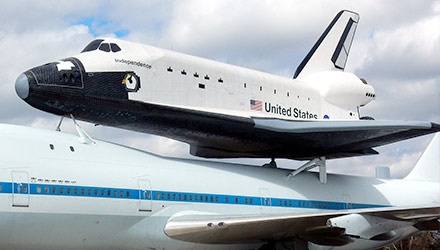Ellen Ochoa: the first Hispanic woman in space
Learn about Ellen Ochoa, the first Hispanic woman astronaut and former Johnson Space Center director. Discover how this pioneering Latina astronaut shaped Texas space exploration.



Ellen Ochoa: the first Hispanic woman in space
Learn about Ellen Ochoa, the first Hispanic woman astronaut and former Johnson Space Center director. Discover how this pioneering Latina astronaut shaped Texas space exploration.
In the vast universe of space exploration, Ellen Ochoa shines brightly, lighting the way for future generations of women and minorities in the fields of science, technology, engineering, and math (STEM). Not only has she left her mark on the stars, she is also an inspiration for her dedication and accomplishments. As a Houston-based company, Reliant is proud to salute our neighbors at NASA and the achievements of program pioneers like Ellen Ochoa.
Her professional contributions have not only led her to become the first Hispanic woman to travel to space, but they’ve also earned her a variety of accolades, including NASA's most prestigious award, the Distinguished Service Medal in 2015, a place in the American Astronaut Hall of Fame in 2017, and the Presidential Medal of Freedom in 2024.
Born in Los Angeles, California, in 1958, Ellen displayed a curiosity and love for math and science that led her to exceed all expectations. Her dedication to education has been the cornerstone of her career. She earned a bachelor's degree in physics from San Diego State University. Her love of physics, mathematics and engineering led her to earn a Master of Science and a Ph.D. in electrical engineering from Stanford University.
Ellen has been a prolific inventor who helped create several systems and methods that received patents. She applied the knowledge in optics gained during her doctoral research at Stanford to her work for a private company. Her name is on three patents for her work in optical systems: one for an optical inspection system that detects defects in repeating patterns, the second for an automated inspection system, and the third for a method used to detect imperfections in texture patterns in photographs. These innovations have contributed to the automation of space exploration.
In 1988, Ellen began working for NASA at the Ames Research Center in California as a research engineer and in 1990 was selected by NASA for the astronaut program. She completed her basic training in 1991 and in 1993 became the first Hispanic woman to go into space when she joined the Space Shuttle Discovery mission to study the Earth's ozone layer. The mission was to bring supplies to the International Space Station so the astronauts could stay at the station, and two cranes that were attached to the exterior of the space station with a robotic arm were operated by Ellen and later used to build the rest of the station. She participated in three other space missions as payload commander, mission specialist and flight engineer. Her third mission was the first in which a space shuttle was able to dock at the International Space Station.
After completing more than 1,000 hours in orbit, Ellen continued working at NASA. She served as deputy director of the Johnson Space Center in Houston, where Reliant has been proud to present several events, including the annual holiday light show, Galaxy Lights. In 2013, she became the first Hispanic woman to become director of the Space Center and continued in this position until 2018.
Growing up in La Mesa, California, Ellen did not see becoming an astronaut as a viable prospect for her and other girls her age. But hearing other female engineers and scientists, such as astronaut Sally Ride, talk about their work encouraged her to consider a career in this field. Ellen knows the importance of having role models and has therefore emphasized the importance of women and minority representation in the fields of science and technology. She is a well-known advocate for STEM education. She has been a speaker in over 300 presentations and worked tirelessly to ensure that future generations of women and minorities have the same opportunities to achieve their dreams as she did. For her, the curiosity, enthusiasm and desire to expand knowledge that careers in science, technology, engineering and mathematics foster have a positive impact on the world, and that is why she has been a tireless advocate for the representation of women and minorities in these fields.
Behind the astronaut, there is a person with a great love for music and family. Ellen is a talented classical flutist, and her love for music has accompanied her throughout her life. She considered studying music in college, and, although she later decided on physics, she played with her university's marching band and wind ensemble. She took her flute on her first mission aboard the Space Shuttle Discovery and played it in space in zero gravity.
Ellen is the third of five children. Her paternal grandparents emigrated from Sonora, Mexico, to Arizona and then to California, where her father was born. Although neither of her parents was college educated when they married, her mother started going to college when Ellen was a baby to set a good example for her children. Ellen is married and has a son and a daughter. Her story teaches us that with determination and courage, there are no limits to what we can achieve. Ellen has lit the way for future generations and shown that all of us can have a place among the stars.
Select a category from the dropdown menu.